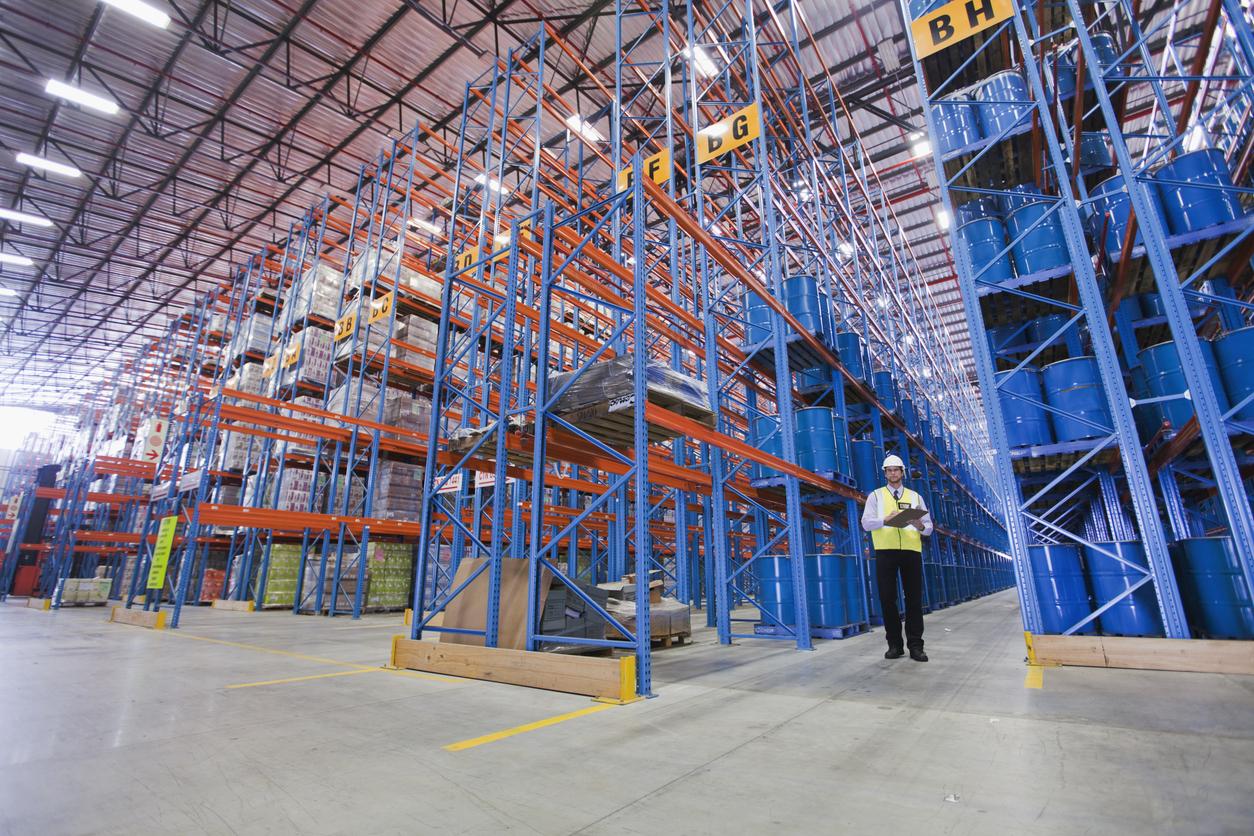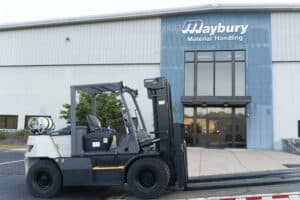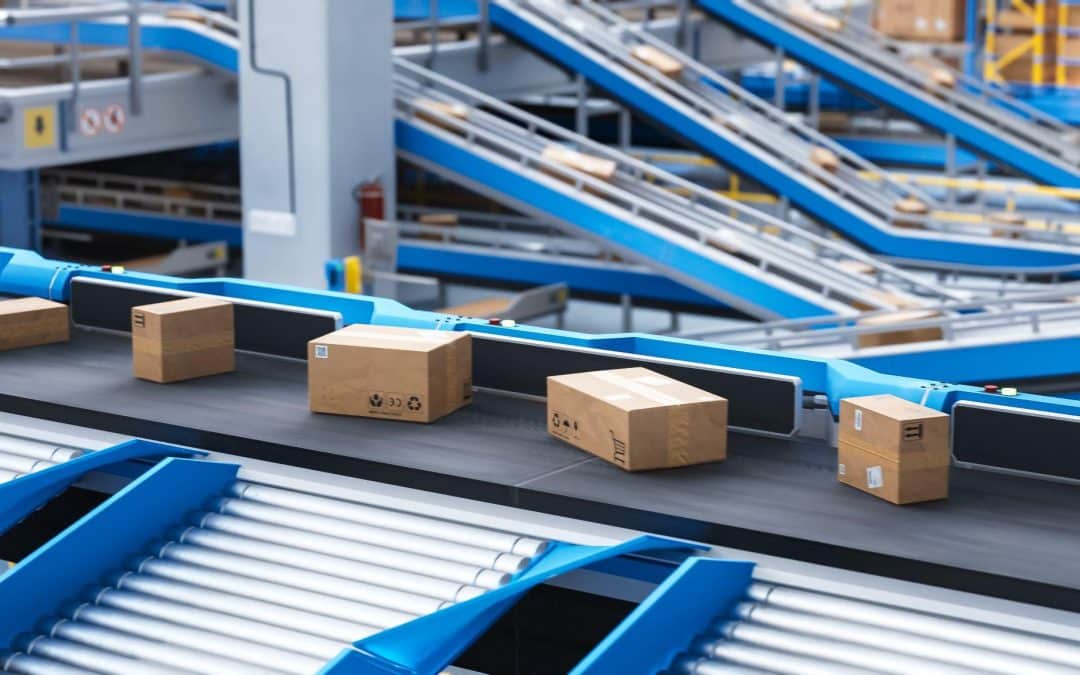In today’s fast-paced, competitive environment, warehouses are the backbone of many businesses. Whether your warehouse is a small operation or part of a large distribution center, its important to improve warehouse performance. This intentiomal optimization is critcal for staying ahead of the competition, reducing costs, and maintaining customer satisfaction. By focusing on optimizing processes, adopting the right technologies, and leveraging specialized material handling equipment, warehouse managers can significantly enhance efficiency, reduce waste, and create smoother operations.
At Maybury, we specialize in providing high-quality material handling equipment and expert services to help you streamline your operations and improve your warehouse. This article will guide you through key strategies to enhance your warehouse performance.
1. Assess Your Current Operations
Before implementing any changes to improve your warehouse, it’s crucial to conduct a thorough assessment of your current operations to ensure these changes will have the intended effect. This helps identify bottlenecks, inefficiencies, and opportunities for improvement. Analyze each area of your warehouse, from receiving to shipping, and identify pain points such as delayed processing times, misplaced inventory, or inefficient use of space.
Consider using Maybury’s professional warehouse assessment services to get a fresh, expert perspective on your operation. Our team can help you analyze workflows and recommend actionable improvements based on your specific needs and processes.
2. Optimize Warehouse Layout and Design
The physical layout of your warehouse plays a significant role in overall efficiency. By arranging workstations, inventory storage, and aisles in a way that minimizes travel time and maximizes space usage, you can drastically improve operations.
- Slotting and Zoning: Use slotting techniques to place frequently picked items near the packing stations and group products that are often ordered together in the same zone.
- Vertical Space: Utilize vertical storage solutions to maximize floor space. Implementing equipment like Maybury’s industrial shelving units or vertical lift modules (VLMs) can help you store more items without needing additional square footage.
Additionally, you should regularly review your layout to ensure it continues to support changing inventory needs. A well-planned design minimizes unnecessary movement, saving time and labor costs.
3. Embrace Automation and Advanced Technologies
Improve warehouse operations with automation to boost productivity and minimize manual errors. By integrating advanced technologies, you can streamline processes, track inventory in real-time, and reduce the risk of human error.
Automated Storage and Retrieval Systems (AS/RS): These systems can move goods to and from storage locations automatically, reducing the time and labor required for picking and packing.
- Warehouse Management Systems (WMS): Implementing a WMS can help you keep better track of inventory, manage shipments, and optimize routes for picking. Maybury offers expert WMS implementation to streamline your processes.
- Robotics: Automated guided vehicles (AGVs) and collaborative robots can handle repetitive tasks such as transporting goods within the warehouse. This allows workers to focus on more complex tasks that require human intervention.
- Barcode Scanners and RFID Technology: These technologies can improve accuracy in inventory management by reducing the need for manual data entry and enhancing visibility into stock levels.
By integrating such technologies, you can optimize operations, lower labor costs, and reduce the risk of human error.

4. Implement Lean Warehouse Principles
Lean warehouse management focuses on eliminating waste—whether it’s time, labor, or materials. This system helps create more efficient operations by reducing non-value-added activities. The main areas to focus on are:
- Reducing Excess Inventory: Overstocking ties up capital and consumes storage space. Use demand forecasting and real-time data to maintain optimal inventory levels.
- Streamlining Processes: Identify unnecessary steps in your workflow and eliminate them. Automating repetitive tasks can save time and increase accuracy.
- Minimizing Motion Waste: Workers spend a significant amount of time walking or searching for items. With a smart warehouse design and technologies like mobile workstations, you can reduce unnecessary motion and boost productivity.
At Maybury, we provide equipment such as conveyor systems, pallet jacks, and sorting solutions that facilitate lean warehouse management, ensuring a smoother and more efficient operation.
5. Enhance Workforce Efficiency
Improve warehouse performance by enhancing employee productivity. Offer training, ergonomic tools, and performance incentives to empower your workforce and optimize operations.
- Training Programs: Ensure your staff is properly trained in using the latest technologies and material handling equipment. Investing in continuous training keeps your employees updated on the best practices and safety protocols, reducing mistakes and increasing productivity.
- Ergonomics: Providing ergonomically designed tools such as Maybury’s lift-assist equipment or ergonomic workstations can reduce worker fatigue and injuries, resulting in a more productive workforce.
- Incentive Programs: Encourage productivity through incentive programs that reward employees for hitting performance targets, such as speed, accuracy, or overall output.
Happy, well-trained workers contribute directly to improved warehouse performance.
6. Optimize Inventory Management
Efficient inventory management is the backbone of warehouse performance. Poor inventory control leads to delays, misplaced items, and customer dissatisfaction. Here are some strategies to improve inventory accuracy:
- Real-Time Tracking: Use RFID tags, barcode scanners, and WMS software to track inventory in real time. This helps reduce stock discrepancies and ensures items are easy to locate.
- Cycle Counting: Instead of doing large-scale annual inventory counts, adopt a cycle counting strategy where a small portion of inventory is counted daily or weekly. This helps identify discrepancies early on and ensures more accurate stock levels.
- First-In-First-Out (FIFO): Implement FIFO to minimize the risk of obsolete inventory, particularly for perishable goods. Maybury offers material handling solutions like pallet flow racking systems that are designed to support FIFO inventory methods.
Accurate inventory tracking and control can prevent costly mistakes, speed up order fulfillment, and increase overall efficiency.

7. Enhance Safety and Compliance
Safety is paramount in any warehouse environment. By prioritizing worker safety and maintaining compliance with industry regulations, you not only protect your team but also reduce downtime due to accidents or regulatory penalties.
- Regular Safety Training: Conduct regular safety training to ensure workers are aware of the latest protocols. Maybury offers safety solutions, including protective barriers and anti-slip mats, to reduce risks.
- Equipment Maintenance: Keeping material handling equipment in top condition reduces the chances of breakdowns and accidents. Schedule regular maintenance checks for all machinery, including forklifts and conveyor systems.
- Proper Signage and Labeling: Clearly label aisles, storage zones, and hazardous areas to prevent accidents and confusion.
A safe warehouse is a more efficient one. By investing in safety improvements, you can avoid costly disruptions and maintain a productive workforce.
8. Prioritize Data-Driven Decision Making
One of the most effective ways to improve warehouse performance is by making data-driven decisions. The use of analytics can help you identify patterns, optimize workflows, and predict future needs.
- Track Key Performance Indicators (KPIs): KPIs such as order accuracy, order cycle time, and inventory turnover rate provide valuable insights into your warehouse’s performance. Use these metrics to identify areas that need improvement.
- Predictive Analytics: By analyzing past data, predictive analytics can forecast future demand, allowing you to adjust inventory levels and staffing accordingly. This reduces the risk of overstocking or understocking.
Maybury’s solutions include integrated warehouse management systems that can provide real-time data and analytics, enabling you to make informed decisions that boost performance.
9. Improve Communication and Coordination
Efficient communication between warehouse teams is vital for ensuring smooth operations. Poor communication can lead to delays, errors, and dissatisfied customers.
- Centralized Communication Platforms: Implement communication tools that allow your staff to share updates in real time. Cloud-based platforms can help warehouse managers communicate effectively with different departments such as procurement, shipping, and customer service.
- Team Coordination: Use team meetings and visual management boards to set daily goals and track progress. This keeps everyone aligned with overall objectives and reduces the chance of miscommunication.
At Maybury, we understand that streamlined communication is essential for success. That’s why we offer consultation services to help you implement the right tools for enhanced coordination.
10. Invest in Energy Efficiency
Reducing energy consumption in your warehouse is not only good for the environment but also lowers operational costs.
- LED Lighting: Replace traditional lighting with energy-efficient LED lights. LED bulbs last longer and use less energy, helping you save on electricity bills.
- Energy-Efficient Equipment: Invest in energy-efficient forklifts, conveyors, and other machinery to reduce energy consumption. Maybury offers a range of energy-efficient material handling solutions to help you achieve sustainability goals.
Energy efficiency contributes to a leaner, more cost-effective warehouse, allowing you to reinvest savings into other areas of improvement.
To effectively improve warehouse performance, it’s best to follow a multi-faceted approach, from optimizing layouts to embracing automation, improving worker productivity, and leveraging data. By implementing these strategies, your warehouse can operate more efficiently, reduce costs, and better meet customer demands.
At Maybury, we are committed to helping you achieve your warehouse goals. Whether you need expert advice, cutting-edge material handling equipment, or advanced warehouse technologies, our team is here to support your journey toward enhanced efficiency. Contact us today to learn more about how we can help you transform your warehouse operations.



